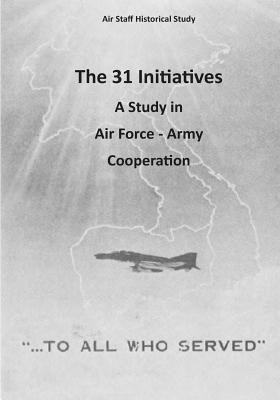
- We will send in 10–14 business days.
- Author: U S Air Force
- Publisher: CreateSpace Independent Publishing Platform
- Year: 2015
- Pages: 178
- ISBN-10: 1507732023
- ISBN-13: 9781507732021
- Format: 17.8 x 25.4 x 1 cm, softcover
- Language: English
- SAVE -10% with code: EXTRA
Reviews
Description
For the past eighty years the US military establishment has worked to integrate air power into its doctrine, strategy, force structure, and tactics in order to maximize the nation's security. This study by Dr. Richard Davis highlights one aspect of this process, that of providing the most potent mix of army and air forces to prosecute ground warfare. It also illustrates the impedimentsto joint action created by the services' separateorganizations and distinctive doctrine. In addition, this monograph suggests that changes to improve interservice cooperation are often either forced by combat or imposed from the top down by the highest levels of the service or defense hierarchies. In World War II, Korea, and Vietnamthe services developed weapons and systems that brought air power to bear on the battlefield in a relatively quick and overwhelmingly powerful manner. Without the impetus of war, however, the services seem often to fall back on their broader agenda of preparation for future war. In the case of the 1980s, intervention by the Chiefs of the Air Force and Army Staffs forced increased cooperation for battlefield synchronization and integration.In this instance the two Chiefs recognized the needand acted. Generals Gabriel and Wickham, aided by their deputies for plans and operations, Lieutenant Generals John T. Chain, Jr., and Fred K. Mahaffey, set up a small ad hoc group, bypassing their own services' formal staffstructure, to fabricate a new method of mutual force development, including cross-service budgeting and programming procedures. The Chiefs adopted the group's recommendations as the foundation of a continuing joint force development process.
- Author: U S Air Force
- Publisher: CreateSpace Independent Publishing Platform
- Year: 2015
- Pages: 178
- ISBN-10: 1507732023
- ISBN-13: 9781507732021
- Format: 17.8 x 25.4 x 1 cm, softcover
- Language: English English
For the past eighty years the US military establishment has worked to integrate air power into its doctrine, strategy, force structure, and tactics in order to maximize the nation's security. This study by Dr. Richard Davis highlights one aspect of this process, that of providing the most potent mix of army and air forces to prosecute ground warfare. It also illustrates the impedimentsto joint action created by the services' separateorganizations and distinctive doctrine. In addition, this monograph suggests that changes to improve interservice cooperation are often either forced by combat or imposed from the top down by the highest levels of the service or defense hierarchies. In World War II, Korea, and Vietnamthe services developed weapons and systems that brought air power to bear on the battlefield in a relatively quick and overwhelmingly powerful manner. Without the impetus of war, however, the services seem often to fall back on their broader agenda of preparation for future war. In the case of the 1980s, intervention by the Chiefs of the Air Force and Army Staffs forced increased cooperation for battlefield synchronization and integration.In this instance the two Chiefs recognized the needand acted. Generals Gabriel and Wickham, aided by their deputies for plans and operations, Lieutenant Generals John T. Chain, Jr., and Fred K. Mahaffey, set up a small ad hoc group, bypassing their own services' formal staffstructure, to fabricate a new method of mutual force development, including cross-service budgeting and programming procedures. The Chiefs adopted the group's recommendations as the foundation of a continuing joint force development process.


Reviews